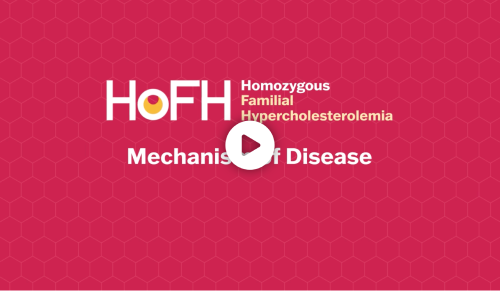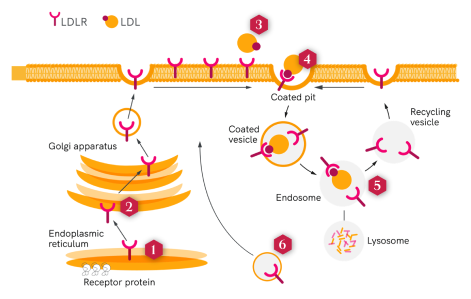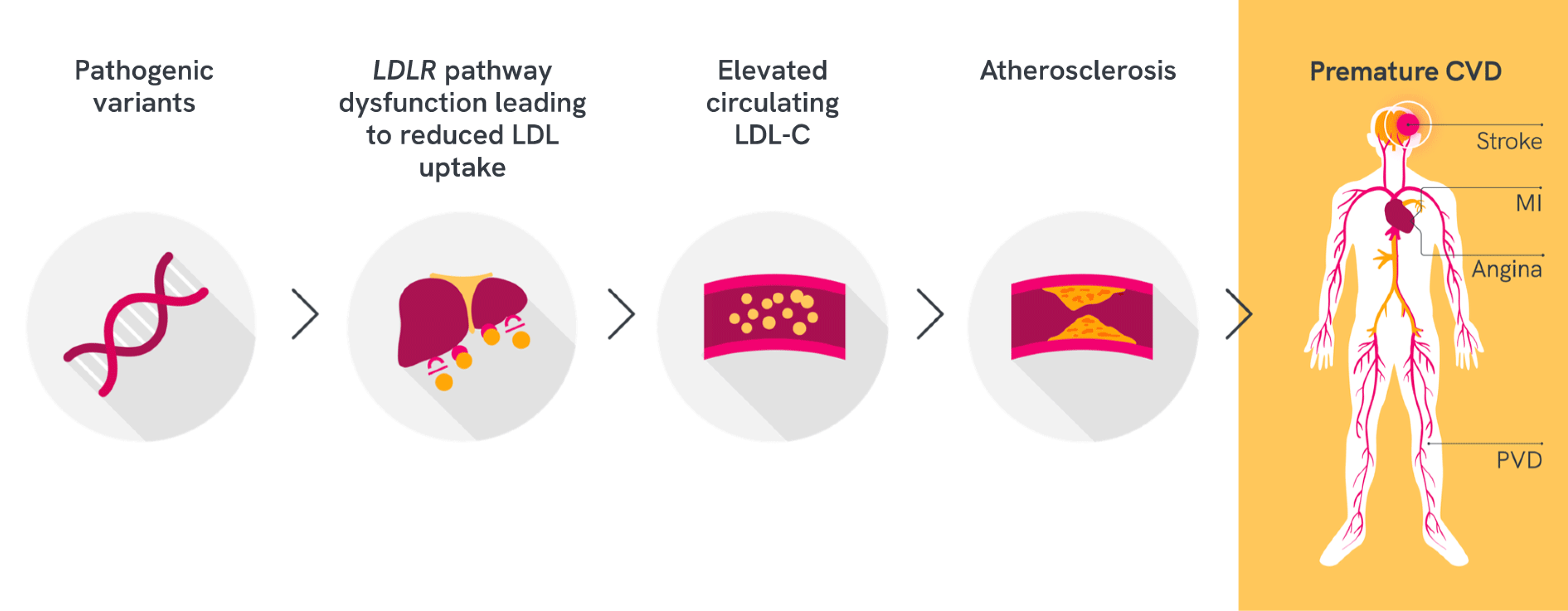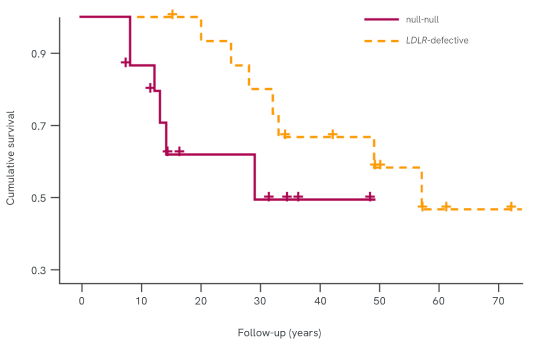85-90% of HoFH patients have pathogenic variants in the LDLR gene1,2


Watch this 2-minute video on the HoFH mechanism of disease
HoFH is associated with pathogenic variants of several genes affecting LDL receptor (LDLR) activity2,3
The majority of LDL is cleared from the plasma by LDLRs located on the cellular membranes of the liver cells.3
These pathogenic variants affect different aspects of LDLR function and can be broadly categorised into six classes:3
 Absent synthesis ofLDLRor precursor protein
Absent synthesis ofLDLRor precursor protein DefectiveLDLRtransport from the endoplasmic reticulum
DefectiveLDLRtransport from the endoplasmic reticulum Impaired binding to LDL
Impaired binding to LDL No LDLR/LDL internalisation because of defective clustering
No LDLR/LDL internalisation because of defective clustering
in clathrin-coated pits NoLDLRrecycling
NoLDLRrecycling FailedLDLRtransport to the surface of the cell membrane
FailedLDLRtransport to the surface of the cell membrane

Pathogenic variants in other genes impairing LDLR function have also been identified in patients with HoFH:3,4
- APOB: Gene encoding apolipoprotein B
- LDLR: Gene encoding the low-density lipoprotein receptor
- LDLRAP1: Gene encoding low-density lipoprotein receptor adaptor protein 1
- PCSK9: Gene encoding proprotein convertase subtilisin/kexin type 9 protein (PCSK9)
APOB = apolipoprotein B; LDLR = low-density lipoprotein receptor; PCSK9 = proprotein convertase subtilisin/kexin type 9; LDLRAP1 = low-density lipoprotein receptor adapter protein 1; FH = familial hypercholesterolaemia; ARH = autosomal recessive hypercholesterolaemia
Pathogenic variants cause LDL pathway dysfunction and reduce removal of LDL-C from the blood, leading to premature atherosclerosis and cardiovascular complications1,3-5

This figure applies to familial hypercholesterolaemia in general.
MI=myocardial infarction. PVD=peripheral vascular disease. CVD=cardiovascular disease. FH=familial hypercholesterolaemia. LDLR=low-density lipoprotein receptor.
LDL-C=low-density lipoprotein cholesterol.
Genetic Criteria
Genetic confirmation of bi-allelic pathogenic/likely pathogenic variants on different chromosomes at the LDLR, APOB, PCSK9, or LDLRAP1 genes or >2 such variants at different loci.4
LDLR-deficient pathogenic variants are associated with little or no LDL binding and uptake3
Compared with patients who are double LDLR-defective and LDLR-defective + LDLR-deficient, patients who are double LDLR-deficient (null/null) present with:3,5-8
- Higher LDL-C
- Higher incidence of CVD
- Worse prognosis
- Reduced response to drug therapy
The majority of LDL is cleared from the plasma by LDLR located on the cellular membranes of the liver2

Adapted from Alonso R et al., 2016
*The SAFEHEART registry is a nationwide registry that includes FH patients living in Spain. Patients are enrolled and followed up every year to record relevant changes in lipid-lowering treatment and development of cardiovascular events. The graph shows survival data from 34 HoFH patients enrolled from 2004 to 2015
CVD=cardiovascular disease. LDLR=low-density lipoprotein receptor. LDL-C=low-density lipoprotein cholesterol.
References
1. France M et al. Atherosclerosis. 2016;255:128-139. 2. Cuchel M et al. Eur Heart J. 2014;35:2146-2157. 3. Gidding SS et al. Circulation. 2015;132:2167-2192. 4. Cuchel M et al. Eur Heart J. 2023;44(25):2277-2291. 5. Nordestgaard BG et al. Eur Heart J. 2013;34:3478-3490. 6. Bruckert E. Atheroscler Suppl. 2014;15:26-32. 7. Sjouke B et al. Eur Heart J. 2015;36:560-565. 8. Alonso R et al. J Clin Lipidol. 2016;10:953-961.